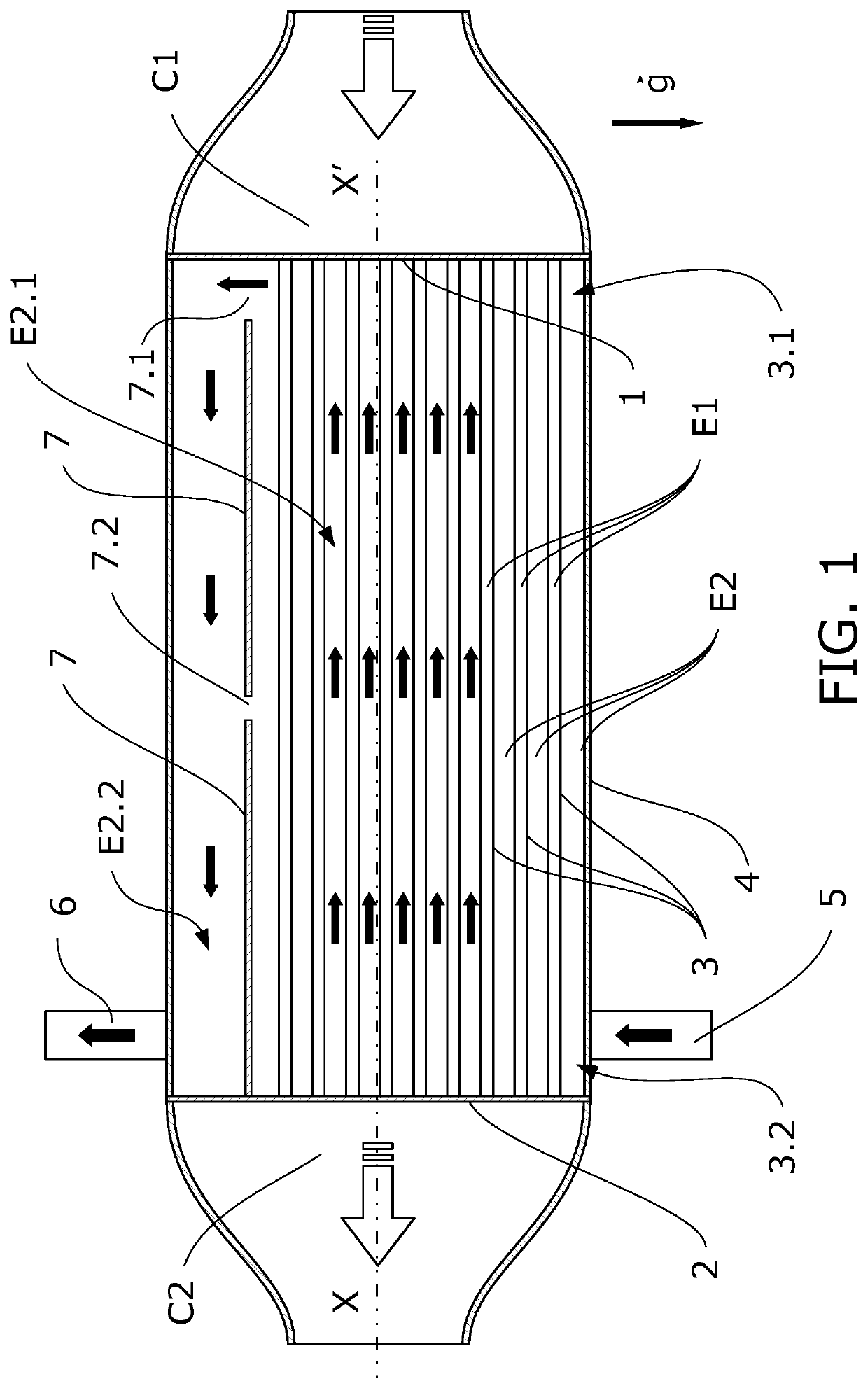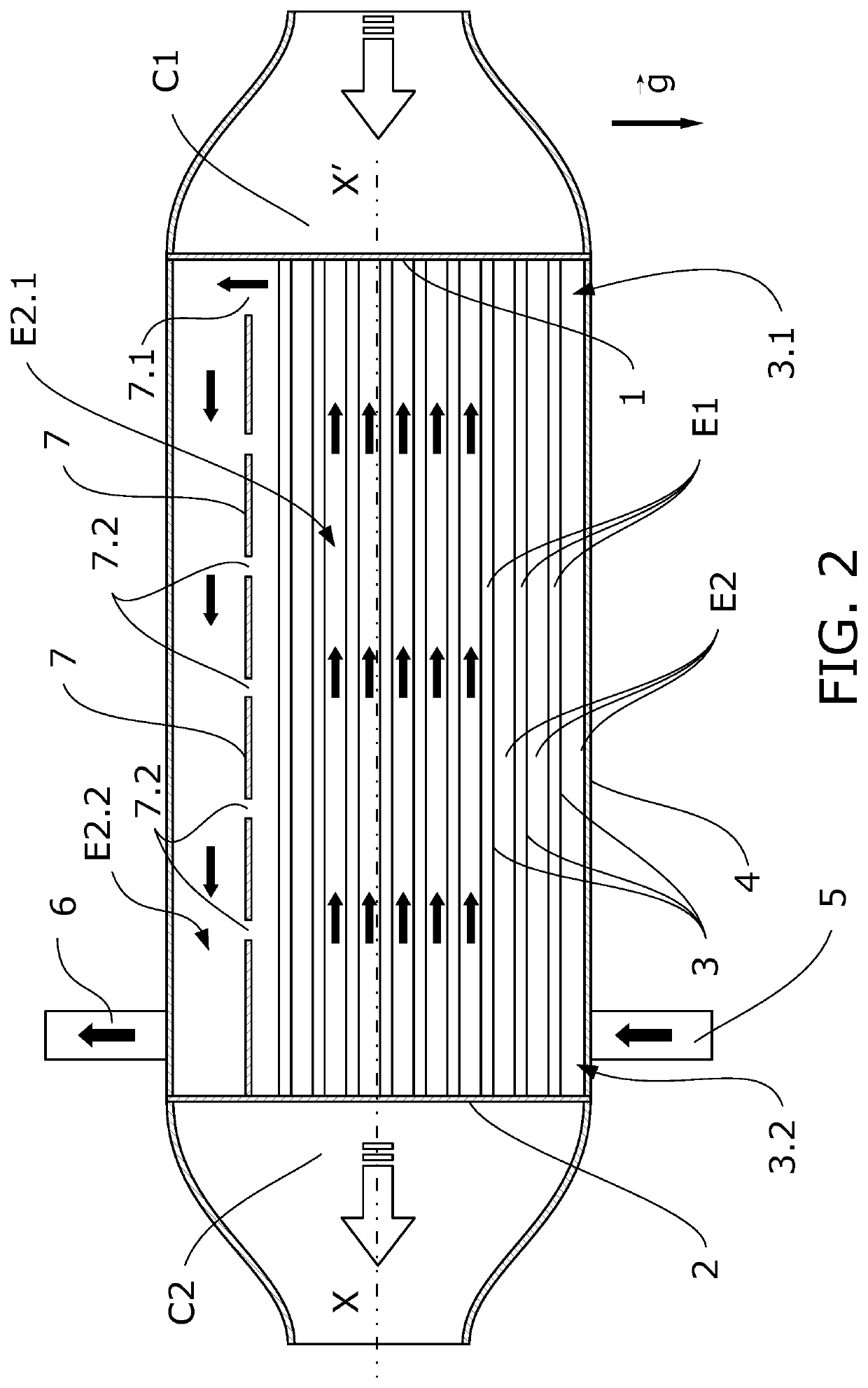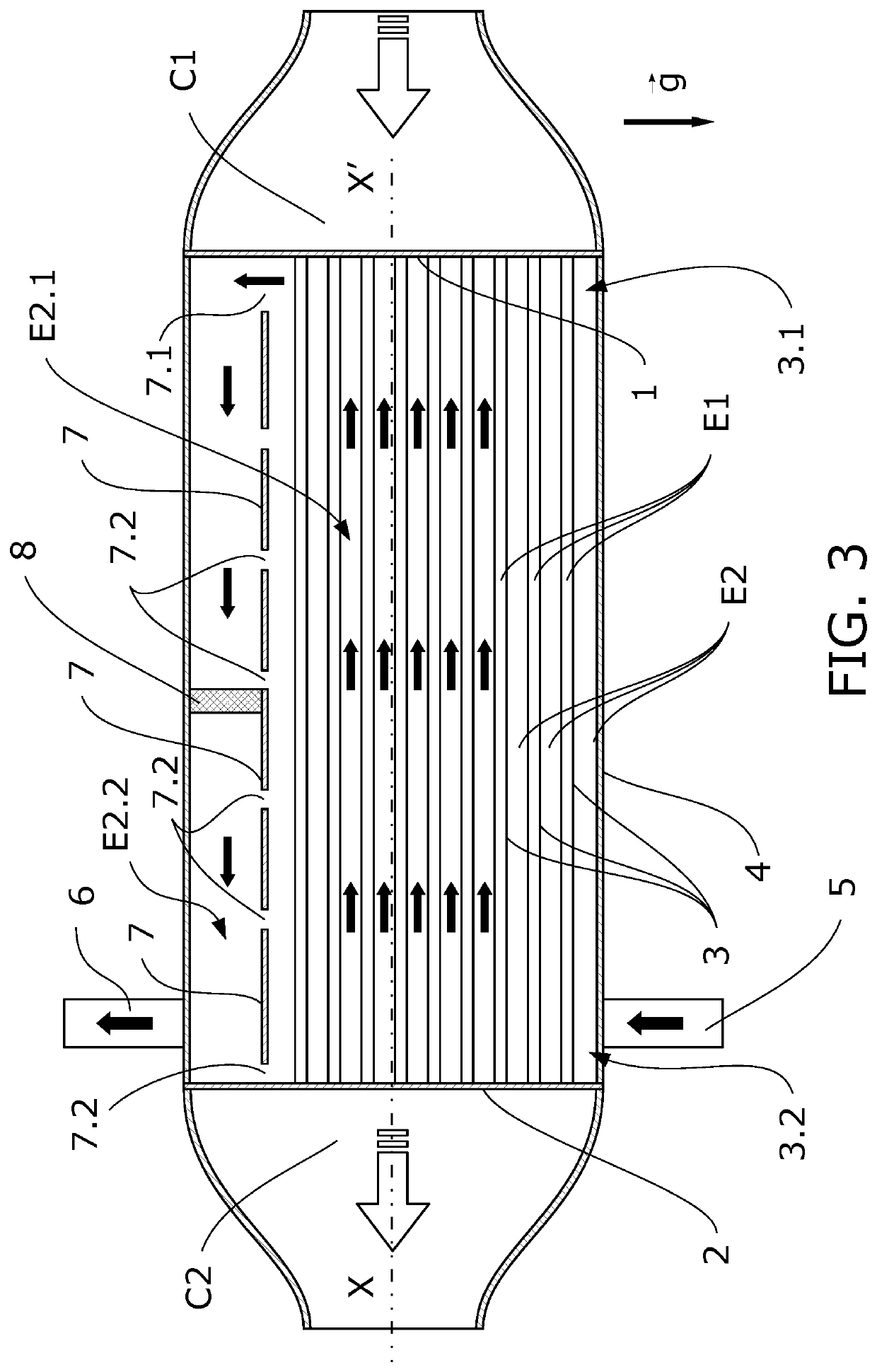Heat exchanger device for EGR systems
a heat exchanger and egr technology, applied in the direction of heat exchange apparatus safety devices, machines/engines, light and heating apparatus, etc., can solve the problems of current heat exchangers, high exhaust gas temperature, dilatations with subsequent stresses, etc., and achieve the effect of reducing thermal fatigu
- Summary
- Abstract
- Description
- Claims
- Application Information
AI Technical Summary
Benefits of technology
Problems solved by technology
Method used
Image
Examples
first embodiment
[0069]FIG. 1 is a schematic figure of the invention depicting a longitudinal section of the heat exchanger according to this first example.
[0070]The heat exchanger comprises a hot gas inlet, wherein in this embodiment the inlet is configured by means of an inlet manifold (C1) located on the right-hand side of the drawing. The flow of the hot gas is depicted by a large, hollow arrow. According to other embodiments, the coupling of the heat exchanger with other devices located upstream of the gas flow, such as a filter or a catalytic converter, can be direct coupling without using a manifold.
[0071]After traversing the heat exchanger giving off part of its heat, the cooled gas exits through an outlet manifold (C2) located on the left-hand side of the same drawing. The flow of the cooled gas is also depicted with a large, hollow arrow. Likewise, according to other embodiments the coupling with other elements located downstream of the gas flow can be direct coupling without using a manif...
third embodiment
[0103]There is a possibility that a stagnation area may appear in the second degassing sub-space (E2.2), at its end in contact with the second outlet port (6). FIG. 3 shows a third embodiment in which an additional opening (7.2) has been added by means of distancing the separator (7) and the second baffle (2), allowing the passage of a small liquid coolant flow intended for preventing the appearance of stagnation or recirculation areas.
[0104]The same FIG. 3 is used to describe another embodiment which allows breaking the vapor bubbles before they exit the heat exchanger and which is applicable to any of the examples described up until now and below.
[0105]According to this embodiment, the second sub-space (E2.2) houses a porous element (8) which, although it allows the passage of the liquid coolant, forms narrow channels that either cause gas bubbles to break into other smaller bubbles or even to collapse, causing them to disappear.
[0106]The porous element (8) preferably covers the e...
fourth embodiment
[0114]FIG. 4 schematically shows a cross-section in which said cross-section is located close to the first baffle (1) to enable observing the inner spaces and the second baffle (2) where the inlet port (1) and the outlet port (2) are located.
[0115]This section does not allow observing the main opening (7.1) allowing the passage of the liquid coolant from the first exchange sub-space (E2.1) to the second degassing sub-space (E2.2) as it corresponds to the section that is eliminated to enable observing the inside of the heat exchanger.
[0116]This embodiment uses a shell (4) having a circular section and the separator (7) is formed by a bent sheet defining a first heat exchange sub-space (E2.1) in the lower part and a second degassing sub-space (E2.2) in the upper part. In this embodiment, the tubes of the tube bundle (3) are planar tubes vertically oriented to favor the upward movement of the bubbles generated on the exchange surfaces, being removed from the space between tubes (3) wh...
PUM
 Login to View More
Login to View More Abstract
Description
Claims
Application Information
 Login to View More
Login to View More - R&D
- Intellectual Property
- Life Sciences
- Materials
- Tech Scout
- Unparalleled Data Quality
- Higher Quality Content
- 60% Fewer Hallucinations
Browse by: Latest US Patents, China's latest patents, Technical Efficacy Thesaurus, Application Domain, Technology Topic, Popular Technical Reports.
© 2025 PatSnap. All rights reserved.Legal|Privacy policy|Modern Slavery Act Transparency Statement|Sitemap|About US| Contact US: help@patsnap.com



